Zhoujian Cao
Compact Binary Systems Waveform Generation with Generative Pre-trained Transformer
Oct 31, 2023Abstract:Space-based gravitational wave detection is one of the most anticipated gravitational wave (GW) detection projects in the next decade, which will detect abundant compact binary systems. However, the precise prediction of space GW waveforms remains unexplored. To solve the data processing difficulty in the increasing waveform complexity caused by detectors' response and second-generation time-delay interferometry (TDI 2.0), an interpretable pre-trained large model named CBS-GPT (Compact Binary Systems Waveform Generation with Generative Pre-trained Transformer) is proposed. For compact binary system waveforms, three models were trained to predict the waveforms of massive black hole binary (MBHB), extreme mass-ratio inspirals (EMRIs), and galactic binary (GB), achieving prediction accuracies of 98%, 91%, and 99%, respectively. The CBS-GPT model exhibits notable interpretability, with its hidden parameters effectively capturing the intricate information of waveforms, even with complex instrument response and a wide parameter range. Our research demonstrates the potential of large pre-trained models in gravitational wave data processing, opening up new opportunities for future tasks such as gap completion, GW signal detection, and signal noise reduction.
DECODE: DilatEd COnvolutional neural network for Detecting Extreme-mass-ratio inspirals
Aug 31, 2023Abstract:The detection of Extreme Mass Ratio Inspirals (EMRIs) is intricate due to their complex waveforms, extended duration, and low signal-to-noise ratio (SNR), making them more challenging to be identified compared to compact binary coalescences. While matched filtering-based techniques are known for their computational demands, existing deep learning-based methods primarily handle time-domain data and are often constrained by data duration and SNR. In addition, most existing work ignores time-delay interferometry (TDI) and applies the long-wavelength approximation in detector response calculations, thus limiting their ability to handle laser frequency noise. In this study, we introduce DECODE, an end-to-end model focusing on EMRI signal detection by sequence modeling in the frequency domain. Centered around a dilated causal convolutional neural network, trained on synthetic data considering TDI-1.5 detector response, DECODE can efficiently process a year's worth of multichannel TDI data with an SNR of around 50. We evaluate our model on 1-year data with accumulated SNR ranging from 50 to 120 and achieve a true positive rate of 96.3% at a false positive rate of 1%, keeping an inference time of less than 0.01 seconds. With the visualization of three showcased EMRI signals for interpretability and generalization, DECODE exhibits strong potential for future space-based gravitational wave data analyses.
MLGWSC-1: The first Machine Learning Gravitational-Wave Search Mock Data Challenge
Sep 22, 2022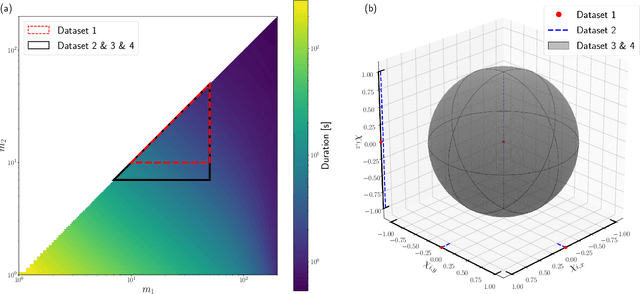
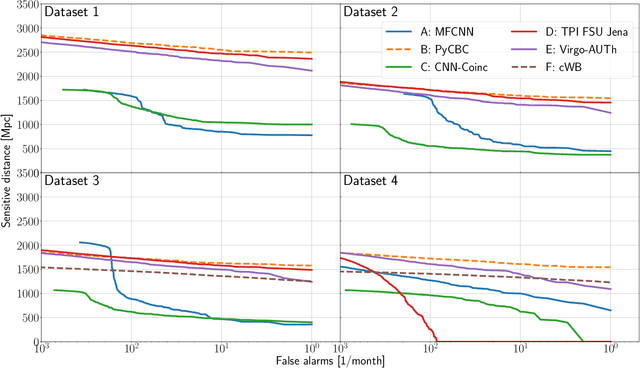
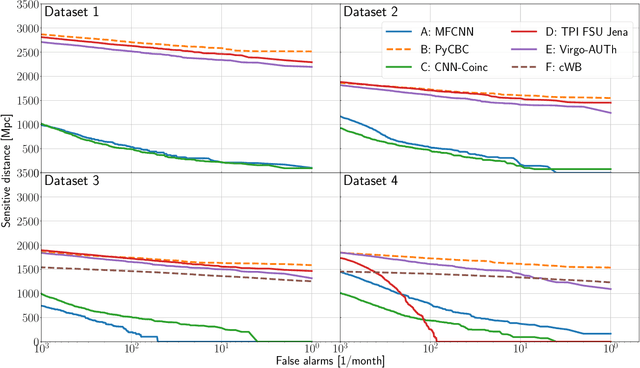
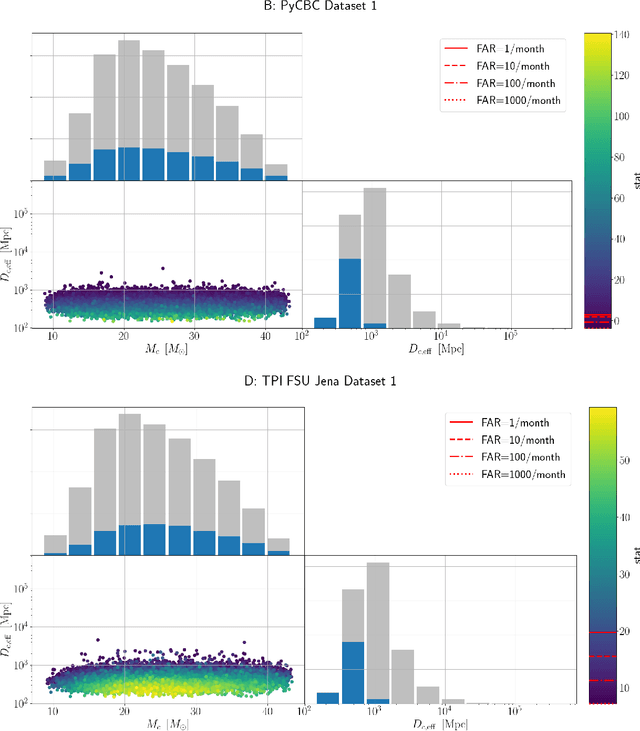
Abstract:We present the results of the first Machine Learning Gravitational-Wave Search Mock Data Challenge (MLGWSC-1). For this challenge, participating groups had to identify gravitational-wave signals from binary black hole mergers of increasing complexity and duration embedded in progressively more realistic noise. The final of the 4 provided datasets contained real noise from the O3a observing run and signals up to a duration of 20 seconds with the inclusion of precession effects and higher order modes. We present the average sensitivity distance and runtime for the 6 entered algorithms derived from 1 month of test data unknown to the participants prior to submission. Of these, 4 are machine learning algorithms. We find that the best machine learning based algorithms are able to achieve up to 95% of the sensitive distance of matched-filtering based production analyses for simulated Gaussian noise at a false-alarm rate (FAR) of one per month. In contrast, for real noise, the leading machine learning search achieved 70%. For higher FARs the differences in sensitive distance shrink to the point where select machine learning submissions outperform traditional search algorithms at FARs $\geq 200$ per month on some datasets. Our results show that current machine learning search algorithms may already be sensitive enough in limited parameter regions to be useful for some production settings. To improve the state-of-the-art, machine learning algorithms need to reduce the false-alarm rates at which they are capable of detecting signals and extend their validity to regions of parameter space where modeled searches are computationally expensive to run. Based on our findings we compile a list of research areas that we believe are the most important to elevate machine learning searches to an invaluable tool in gravitational-wave signal detection.
Space-based gravitational wave signal detection and extraction with deep neural network
Jul 15, 2022



Abstract:Space-based gravitational wave (GW) detectors will be able to observe signals from sources that are otherwise nearly impossible from current ground-based detection. Consequently, the well established signal detection method, matched filtering, will require a complex template bank, leading to a computational cost that is too expensive in practice. Here, we develop a high-accuracy GW signal detection and extraction method for all space-based GW sources. As a proof of concept, we show that a science-driven and uniform multi-stage deep neural network can identify synthetic signals that are submerged in Gaussian noise. Our method has more than 99% accuracy for signal detection of various sources while obtaining at least 95% similarity compared with target signals. We further demonstrate the interpretability and strong generalization behavior for several extended scenarios.
Improved deep learning techniques in gravitational-wave data analysis
Nov 09, 2020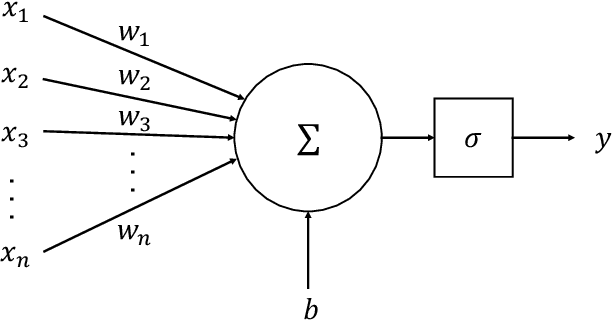
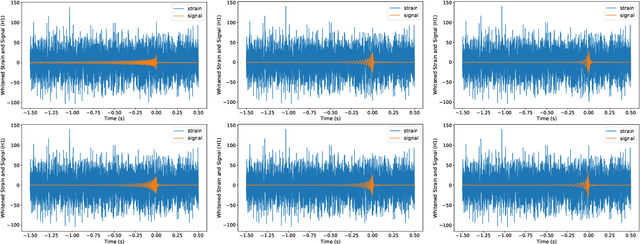
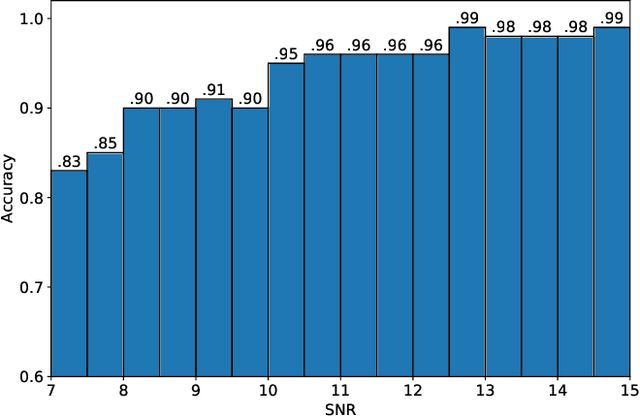
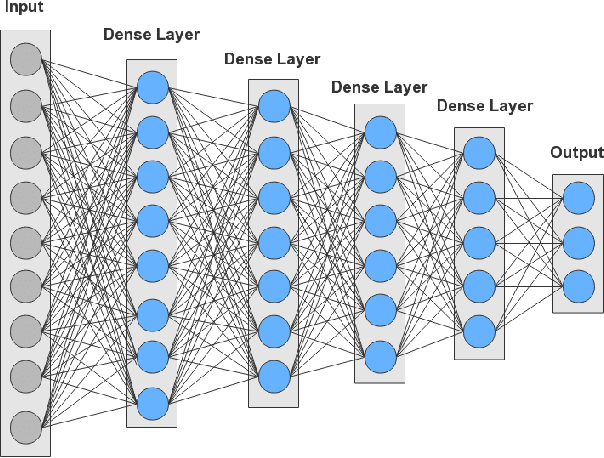
Abstract:In recent years, convolutional neural network (CNN) and other deep learning models have been gradually introduced into the area of gravitational-wave (GW) data processing. Compared with the traditional matched-filtering techniques, CNN has significant advantages in efficiency in GW signal detection tasks. In addition, matched-filtering techniques are based on the template bank of the existing theoretical waveform, which makes it difficult to find GW signals beyond theoretical expectation. In this paper, based on the task of GW detection of binary black holes, we introduce the optimization techniques of deep learning, such as batch normalization and dropout, to CNN models. Detailed studies of model performance are carried out. Through this study, we recommend to use batch normalization and dropout techniques in CNN models in GW signal detection tasks. Furthermore, we investigate the generalization ability of CNN models on different parameter ranges of GW signals. We point out that CNN models are robust to the variation of the parameter range of the GW waveform. This is a major advantage of deep learning models over matched-filtering techniques.
 Add to Chrome
Add to Chrome Add to Firefox
Add to Firefox Add to Edge
Add to Edge